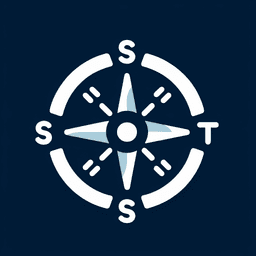
Southwest: Definition, Meaning, and Examples
February 27, 2025
Southwest
In maritime navigation, the term Southwest refers to one of the cardinal directions on a compass, specifically at 225 degrees. It is the intermediate direction between south and west. Understanding and using cardinal directions is crucial for sailors and maritime users for effective navigation and course plotting.
When navigating the seas, knowing the direction of Southwest can help in determining wind patterns, plotting courses, and understanding weather systems. For instance, a sailor might adjust their sails or course based on a forecasted southwest wind, which can significantly impact the speed and direction of travel.
Additionally, the term Southwest is often used in maritime charts and GPS systems to provide precise navigational information. Mariners rely on these tools to ensure safe and efficient travel across the waters.
In summary, Southwest is a fundamental navigational term that plays a vital role in maritime activities, helping sailors to orient themselves and make informed decisions while at sea.
Understanding Maritime Concepts: A Guide for Maritime Users
What is the Formal Definition of Maritime?
The term "maritime" is broadly used to describe anything related to the sea. According to Merriam-Webster, it refers to activities, navigation, or commerce on the sea. This definition is crucial for maritime users as it encompasses all aspects of sea-related activities, from shipping to coastal management.
What are Maritime Terms and Definitions?
Maritime terminology is essential for effective communication and safety at sea. Some common terms include:
- Aboard: Being on or in a vessel.
- Aboveboard: Open and without deceit, often used to describe actions on deck.
- Abreast: Side by side; used to describe the position of ships.
- Anchor: A device used to secure a vessel to the sea bottom.
Understanding these terms is vital for maritime professionals to ensure clear communication and operational efficiency.
What is Considered Maritime?
Maritime refers to any land or activity adjacent to or involving the sea. This includes coastal regions, shipping routes, and marine ecosystems. The term is often used to describe regions like the Canadian Maritimes, which include New Brunswick, Nova Scotia, and Prince Edward Island, all of which are bordered by the Atlantic Ocean.
What are the Four Maritime Provinces?
The Maritime Provinces of Canada consist of New Brunswick, Nova Scotia, and Prince Edward Island. These provinces, along with Newfoundland and Labrador, form the Atlantic Provinces. They are known for their rich maritime history and significant contributions to the shipping and fishing industries.
Conclusion
Understanding maritime concepts and terminology is essential for anyone involved in maritime activities. Whether you are navigating the seas, managing coastal resources, or involved in maritime commerce, a solid grasp of these terms and definitions will enhance your effectiveness and safety in the maritime domain.




